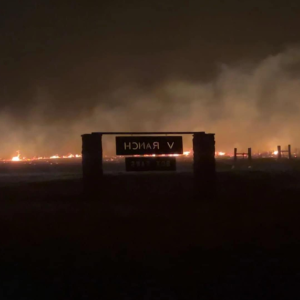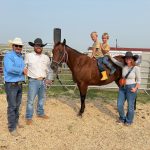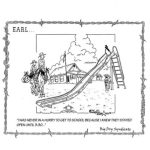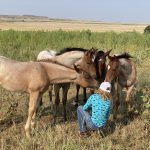Cowboy state heat: Wyoming ranchers report on Red Canyon, Sleeper Ranch fires
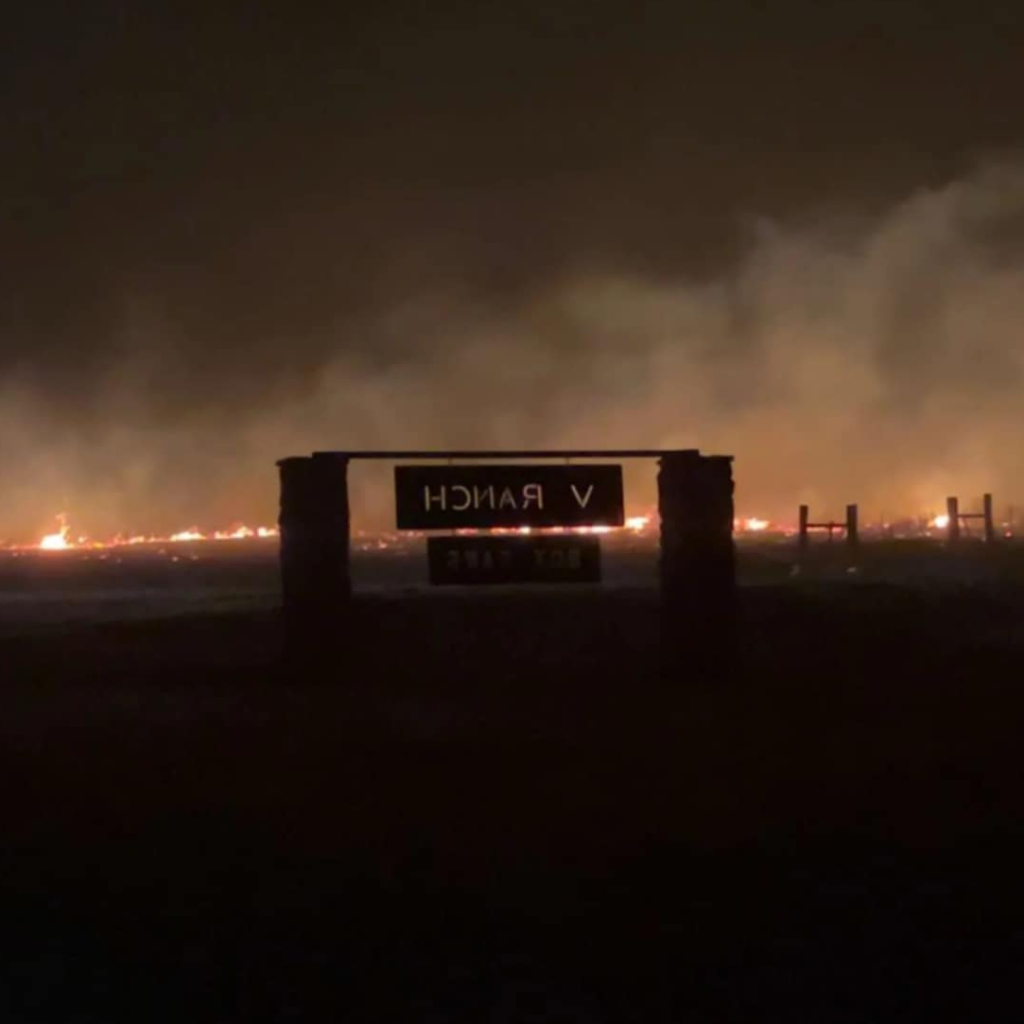
Two different Wyoming fires have burned pasture, fences and more. But reports indicate no loss of human life, no significant structure loss and very few, if any livestock have been killed.
Red Canyon Fire
The Red Canyon fire has burned about 125,000 acres as of press time, and is about 48 percent contained according to Inciweb.
Jim Wilson, his wife Terry, daughter and their daughter and son in law and family operate the V Ranch, where a lightning strike about 11 miles east of Thermopolis started the blaze Aug. 13, 2025.
Thursday, Aug. 21 was the first afternoon Jim was home since the fire started. “It’s been unreal. Something you don’t want to experience,” he said.
While the weather has been dry lately, his region saw good late spring and early summer moisture, resulting in good grass. “We had forage to burn,” he said.
And burn, it did.
“We lost all of our fall country, and about 80 percent of our winter country. We have a little over 30,000 acres for spring, fall and winter country. We figure we probably lost about 4,000 aums,” he said.
Firefighters saved the Wilsons’ home and yard.
His daughter and granddaughter put cattle into their shipping corrals and then ran a fireline around them. Others were pushed together into one pasture and out of harm’s way.
Wilson said when the riders headed out to gather the cattle, they found them in groups of 25 to 75, each bunch on or near the creek. “It was interesting to see. We threw them in together with another bunch.” Wilson said the cattle would have never “outrun” the fire but it appears they had gone to the water for safety.
“They held the fire off of it when it came in Thursday night at midnight,” he said. “The wind was screaming,” he said.
“The wind was unbelievable,” he said, describing the constantly changing wind direction, pushing the fire back and forth.
When the fire arrived on a high peak on Saturday, air support on Sunday held off the flames. “I bet they did 25 hits on that peak,” he said. “Luckily they got it stopped or it could be 20 miles south of us by now. Those guys are good,” he said.
Three planes running simultaneously, dipping out of the Boysen Reservoir, could fill and dump in just 10 or 11 minutes per trip, he said.
Slurry planes dropping retardant on cabins “saved that country” said Wilson.
“This fire got so big so fast and there was so much wind going in all these directions. I don’t know what else they could have done to fight it,” said Wilson.
The Wilsons will probably sell 1/3 of their cowherd due to a loss of forage. He has already bought 800 ton of hay to get the remaining 2/3 through the winter. While they don’t normally feed hay, this year will look different with much of their winter grazing now blackened.
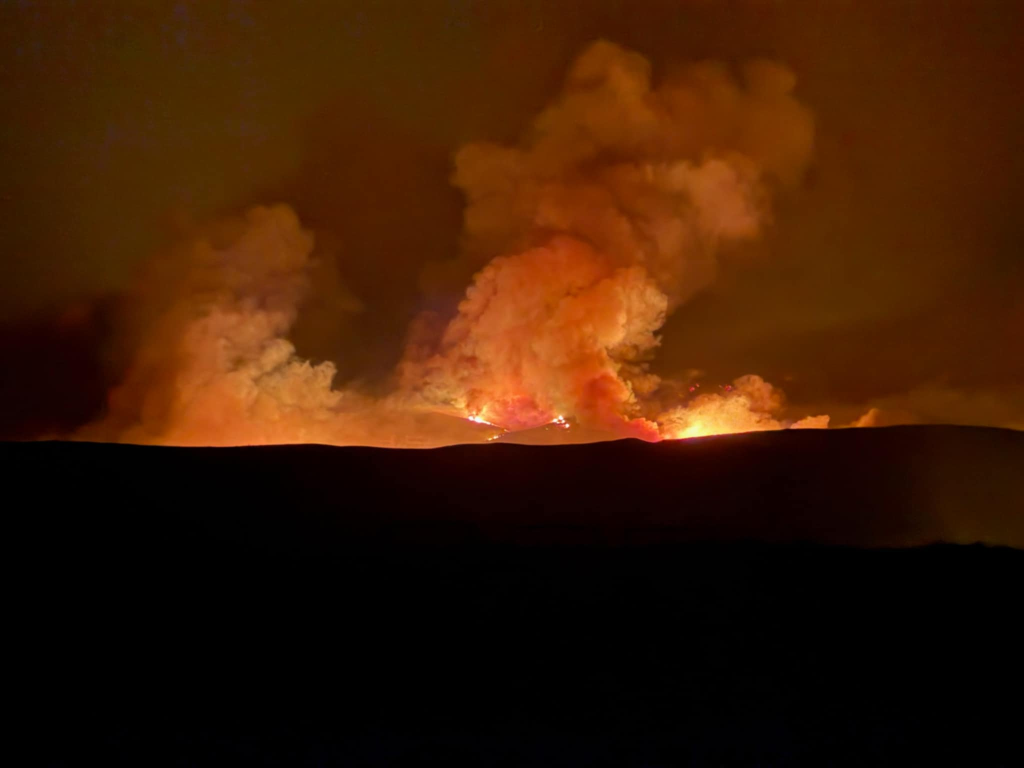
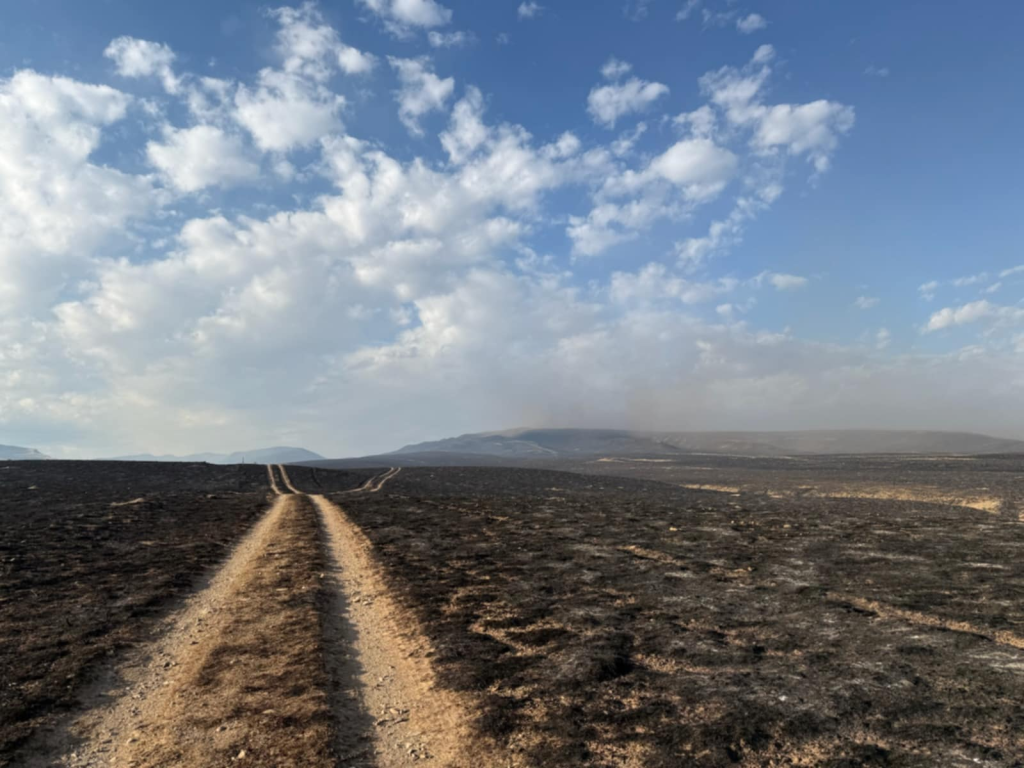
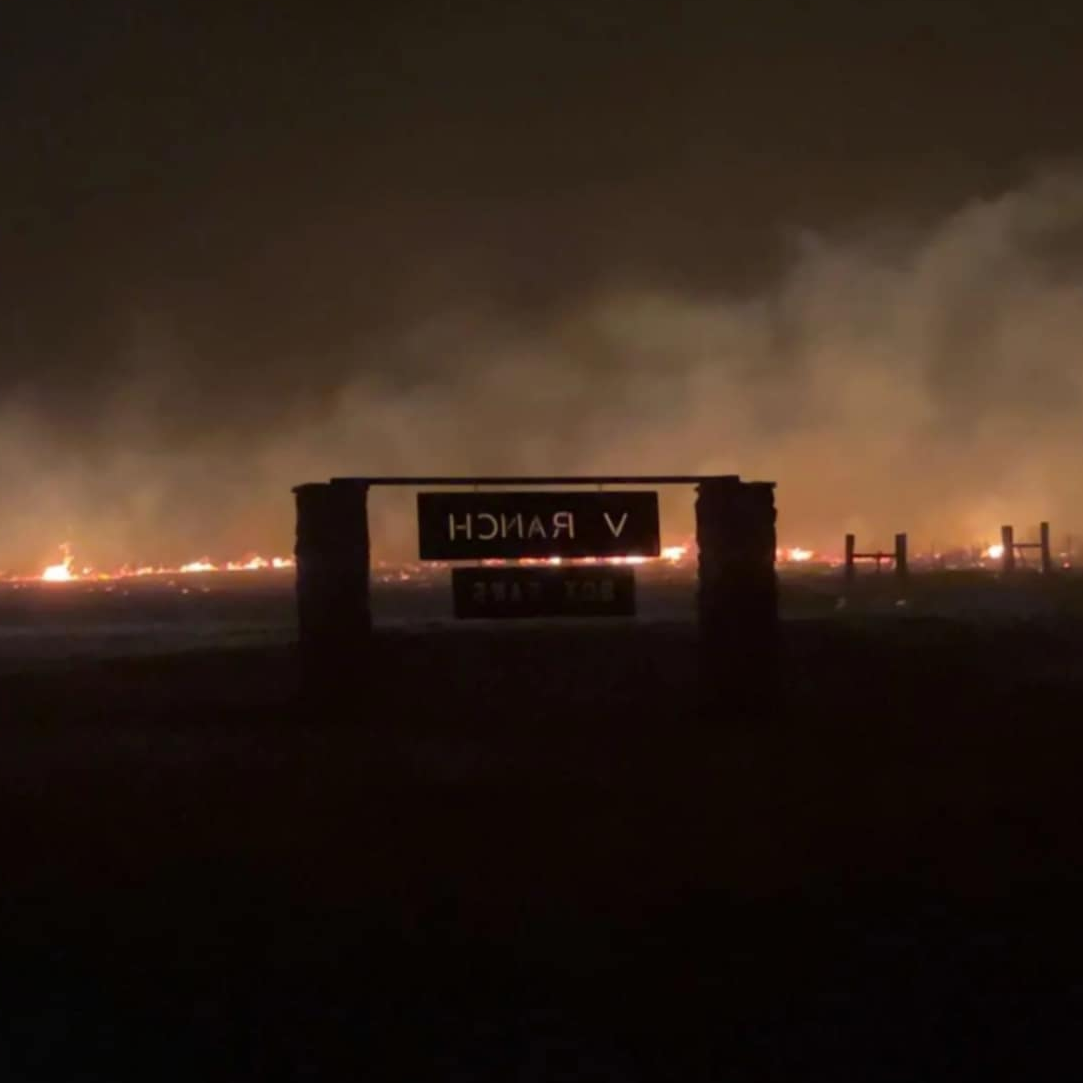
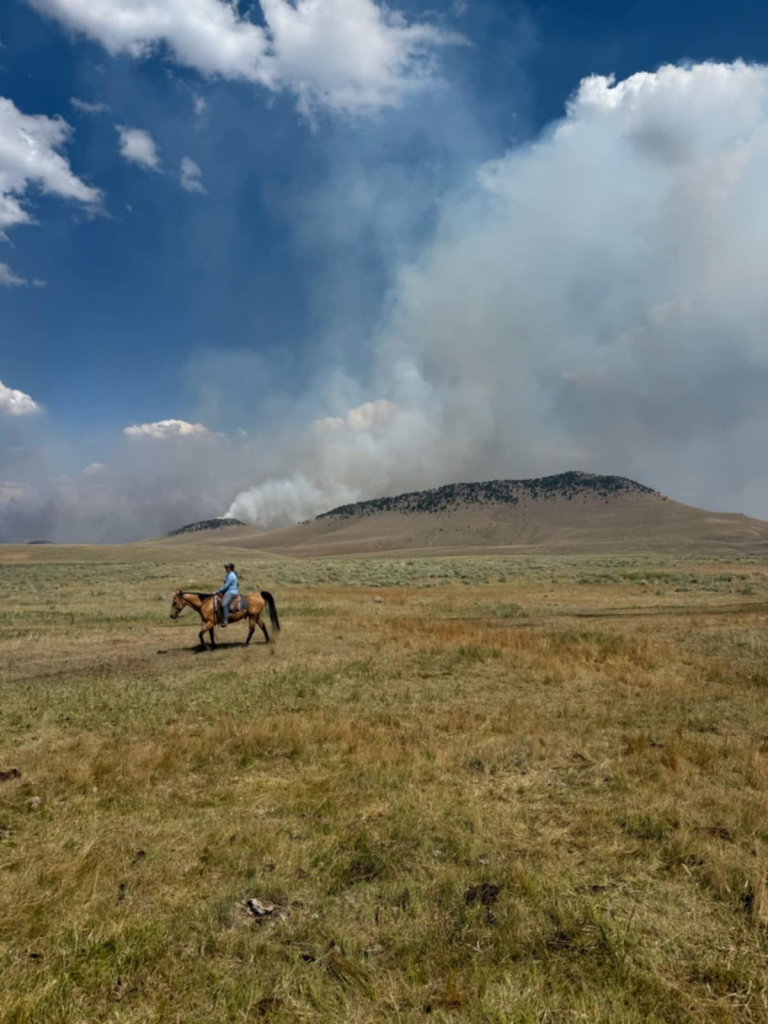
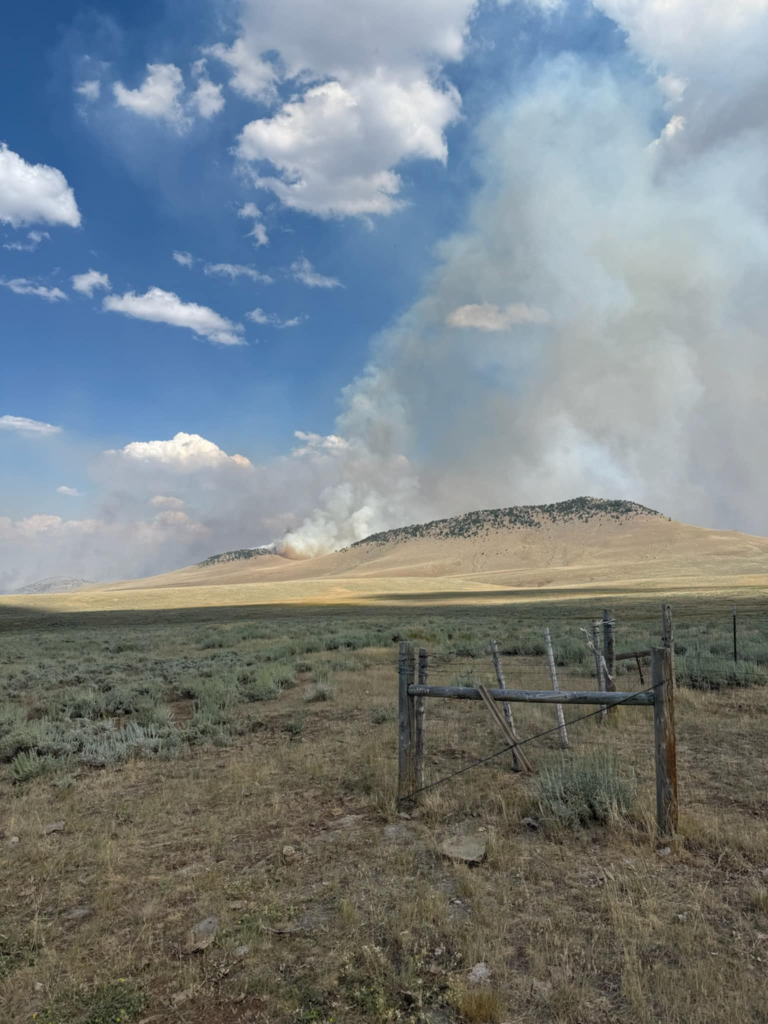
Sleeper Ranch Fire
Daniel Dalton said the Sleeper Ranch Fire, started on the Hoodoo Ranch, which he manages.
Inciweb reports that the reason for the fire remains unknown, but Dalton believes it was likely lightning-caused. He believes a lightning strike started some forage smoldering Wednesday night Aug. 13 and wind fanned the spark into flames on Thursday. Inciweb reports about 18,000 acres burned, with zero percent of the border contained. However local ranchers say it appears to be under control.
Dalton said the Hoodoo consists of about 60 percent private land and about 40 percent federal and state land.
The rough “badlands-like” country made fire suppression difficult, he said. “It’s not mountainous but there are a lot of draws and canyons covered with shell rock, juniper trees and brush. That fire got down in all those little crevices and as soon as the wind would change it would pick up any little fires, roll them up a hill and once it got on top of the hill it would take off.”
Dalton thought the volunteer and government firefighters worked well together and did everything they could have to beat the flames back.
“It was unreal how much the wind would change, it would just swap back and forth. They would shuffle everyone to try to get ahead of it, they had people scattered all around. To get it contained was hard.
If there is a silver lining in the situation, Dalton said they had just moved cattle out of the pasture that burned a day before the flames blew through.
“We literally moved the last of the cows out Wednesday afternoon. Thursday was the fire. All the cattle were through the hayfields, across a rive on the other side of the highway,” he said.
Because the fire mostly went through pastures that had already been grazed, the ranch will be able to get through until spring without buying hay or selling cattle. The fire ended up burning some sage brush that needed to be controlled anyway, said Dalton.
Dalton said he uses a rest-rotation system where a pasture usually gets rested the same season it was grazed the previous year. “Let’s say I graze fairly heavy for brush management, I will give that pasture a full growing season, sometimes a full growing season and a half for dormant season rest.”
So as long as the area gets moisture, the grass should return in good shape, he said. “That country is pretty resilient.
The one big concern is cheatgrass growth, he said. Depending on how that looks, he might use yearlings to control cheatgrass emergence.
Shawn Shepperson of Meeteetse, whose family owns the Hat 2 ranch, said he also appreciated the dedication of the firefighters in extinguishing the flames as quickly as possible.
They prioritized structures and solar wells, water supplies, etc, which is the logical thing to do, he said.
Due to a lack of moisture and a resulting lack of forage, the Hat 2 ranch has already been changing up its grazing plans. “We were already out of synch. This fire on top of that is kind of putting us in a corner but we have time to come up with some other plans,” he said.
The Sheppersons’ early spring grazing was burned in the fire. They lost about 1/3 of their winter grazing.
All of the ranchers are thankful for the commitment of those fighting fire, and are grateful no lives and seemingly no livestock have been lost.
“The volunteer departments around here are amazing,” said Dalton. “Everyone did what they could. They are really great guys. That town of Meeteetse is greatly great people Everyone just jumped in and took care of each other,” he said.
Dalton even had a report of one safety-minded cow.
“We had one cow with a baby in the pasture that burned. She had gotten her calf around into the black and they were fine. She came down a couple days ago, ready to go with the other cows.”

